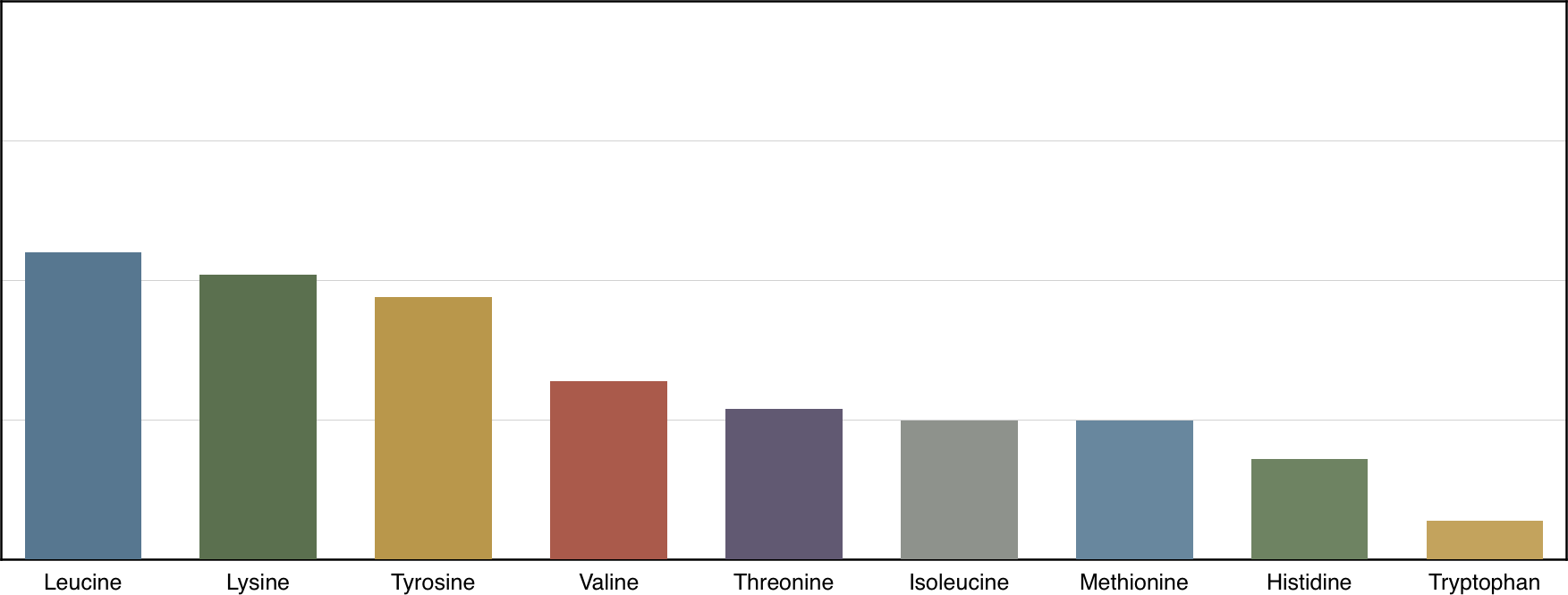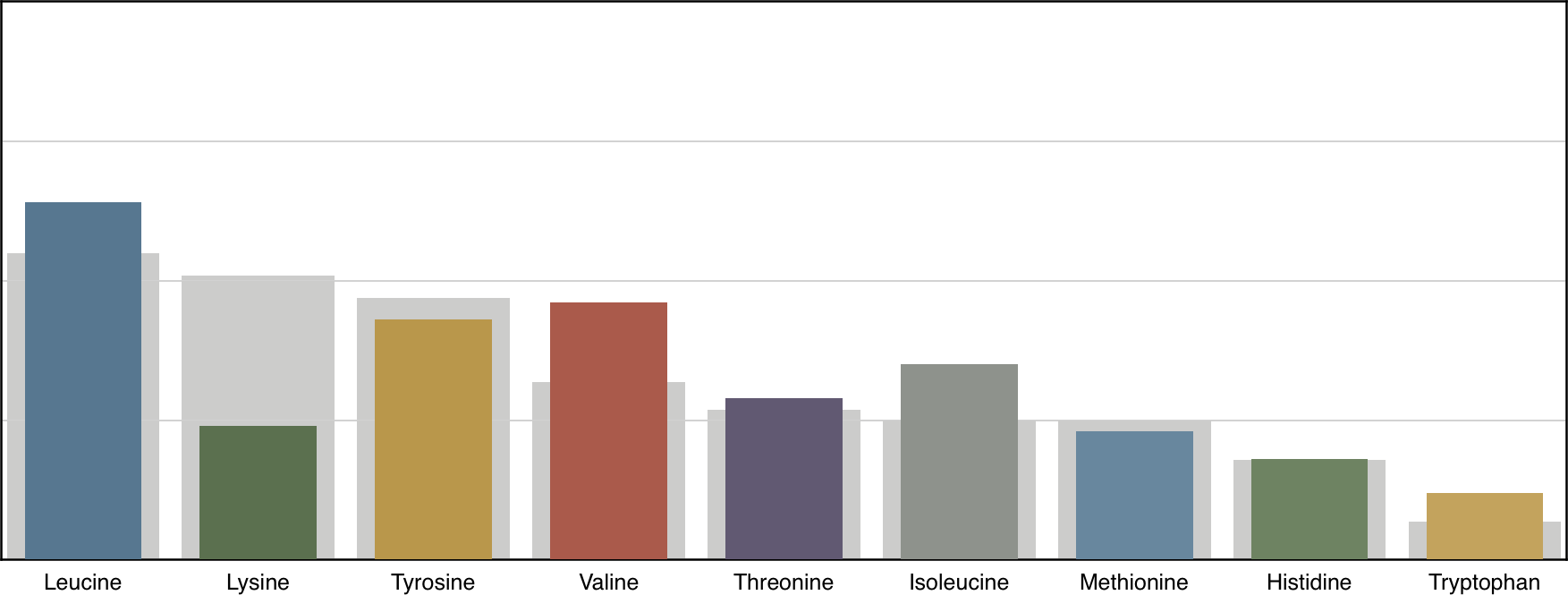These days it shouldn’t be a surprise to anyone that vegans have no problem whatsoever getting enough protein from normal everyday food. This myth is long done, dead, buried.
However, many vegans are trying to grow bigger, stronger, and more powerful by lifting heavy objects and really pushing our bodies. For this purpose, it’s beneficial (1) to go beyond average recommendations and increase our protein intake. One of the easiest ways to do so is via vegan protein supplements.
Optimal protein intake
It is recommended to consume at least 2 grams of protein per kg of lean body mass (2).
Say I weigh 90 kg, minus 20% body fat. That’s 72 kg lean body mass. 72 kg * 2 g protein equals 144 g of protein per day.
That’s one huge plate of tofu!
This is where protein supplementation comes in. There’s nothing magical about it but it’s a convenient way of getting some extra protein.
For vegans, this usually means one of four types: soy protein, hemp protein, brown rice protein, or pea protein.
Amino Acid Profiles
We won’t get too bogged down with sciency stuff but let’s just get the foundations in place.
Protein is made up of smaller building blocks – amino acids. There are 21 amino acids which are useful for our bodies and we can actually produce all but nine of them (the essential amino acids).
Basically, we have to eat these nine.
How much though? That’s what the Dietary Reference Intakes (DRI) tells us:

Quite a lot of leucine, lysine, and tyrosine. A little less valine. Even less threonine, isoleucine, methionine, and histidine. Not very much tryptophan.
If a protein hits those levels it’s called a complete protein.
Let’s see how our vegan proteins stack up to that.
Soy Protein
A complete protein (3). Plenty of leucine, tyrosine, valine, and isoleucine (three of which are the branched amino acids – BCAA).

Hemp Protein
Hemp is close to having enough of some amino acids but it’s not really a complete protein (4). If we had to do a hemp protein vs whey comparison, hemp protein couldn’t rival whey’s profile. That doesn’t make it bad though – it just means you shouldn’t replace all your meals with anything but hemp protein shakes.

Rice Protein
Rice protein has an abundance of some amino acids, in addition to most of the branched ones (5). The only one missing to make it a complete protein is lysine.

Pea Protein
Pea protein has most of the amino acids covered but is a little low in tyrosine and methionine (6).

Bonus: mixed protein
Rice protein is lacking lysine but has plenty of tyrosine and methionine. Pea protein on the other hand has plenty of lysine but lacks some tyrosine and methionine.
So what do you do? You combine them!
This is a popular blend because the texture of pea protein makes for a nice complement to that of rice protein. It tastes a lot better together and it’s seen as the best vegan protein combination.
Personally, I’ve only had a chance to try our Vegan Protein Powder (Chocolate Peanut Flavour) but I’ll attest to the taste.
Your Pick
Whatever protein powder you pick should be completely up to your own personal preferences. Any differences between the two types won’t stretch very far beyond the paper it’s written on.
Found one that tastes great? Sounds like a good candidate. Or one that finally doesn’t cause problems with your sensitive stomach? Go for that!
Eating loads of food and topping that up with the occasional Vegan Protein Powder is also a good strategy.
Related articles
Looking to learn more? We believe that every person, with support, has the right to transform their lives through fitness. That’s why we’ve put together of articles with expert advice, all to help you on your fitness journey. From when to take Glutamine to the benefits of Tyrosine, check out more articles below:
Whey protein amino acid profile L tyrosine benefits
When to take l arginine When to take BCAA
BCAA energy BCAA vs Amino Acids
When to take glutamine Drugs test results
Citrulline malate dosage When to take CLA
















